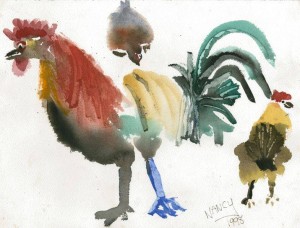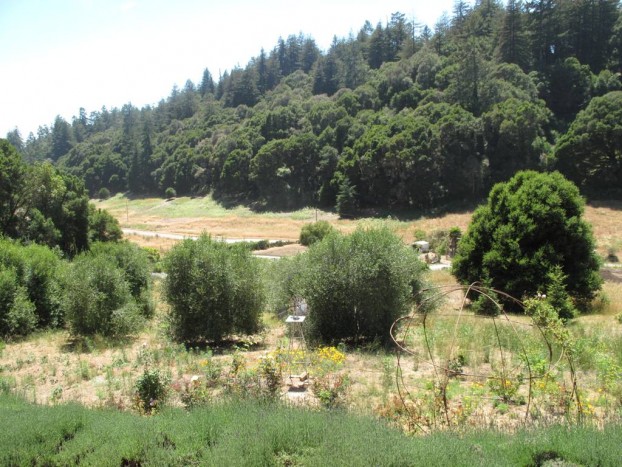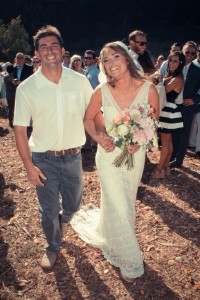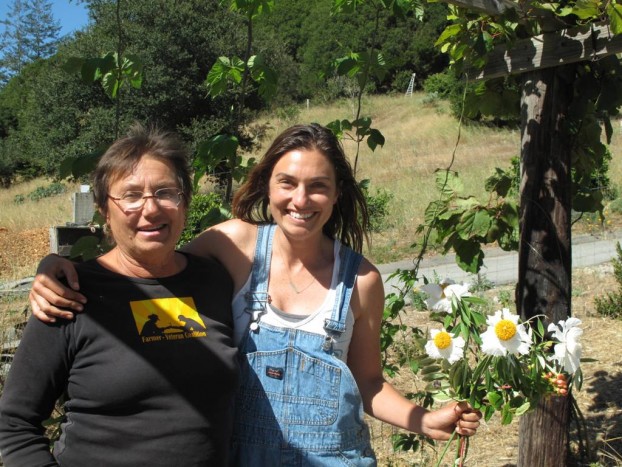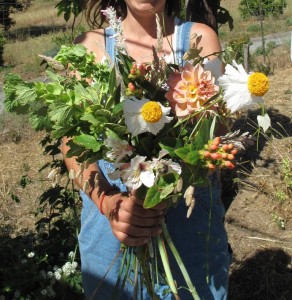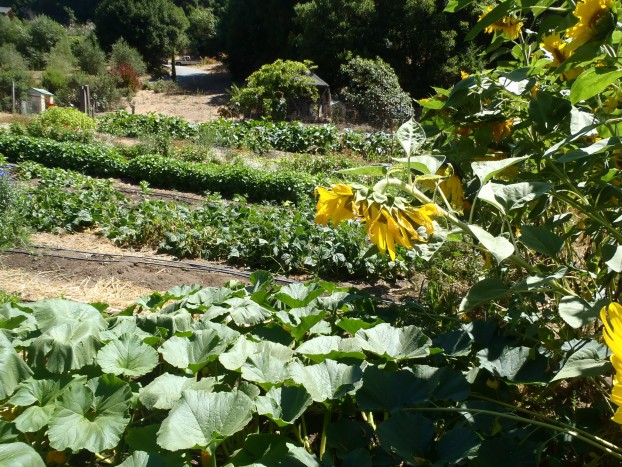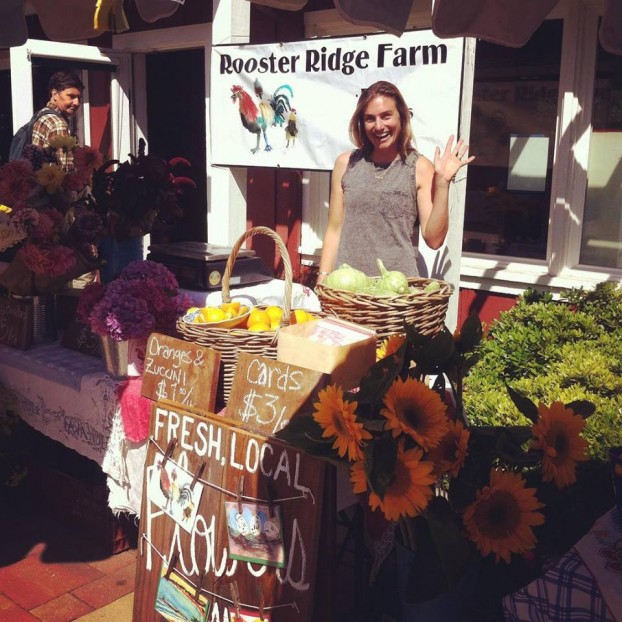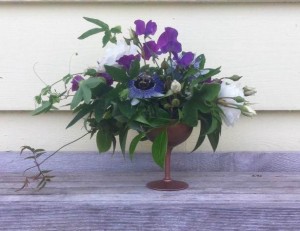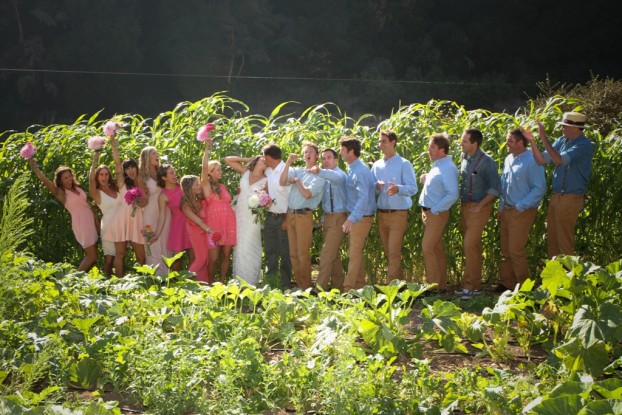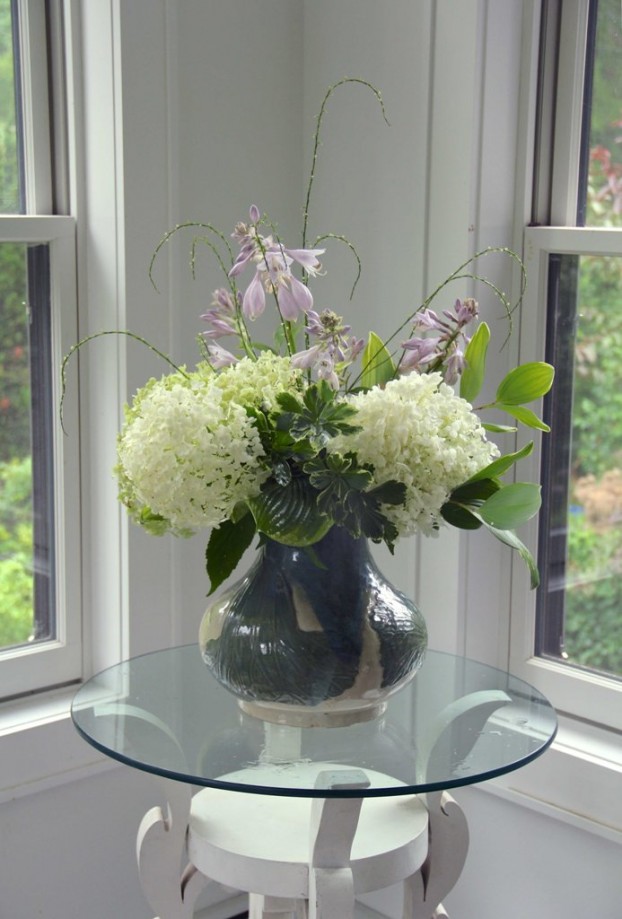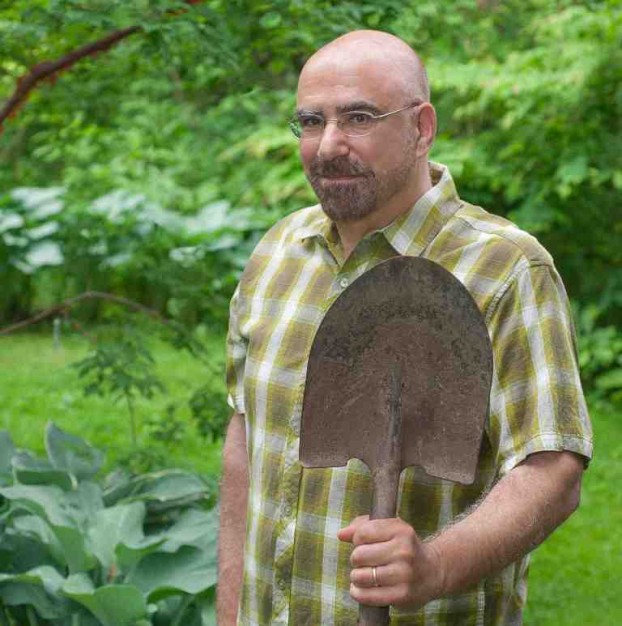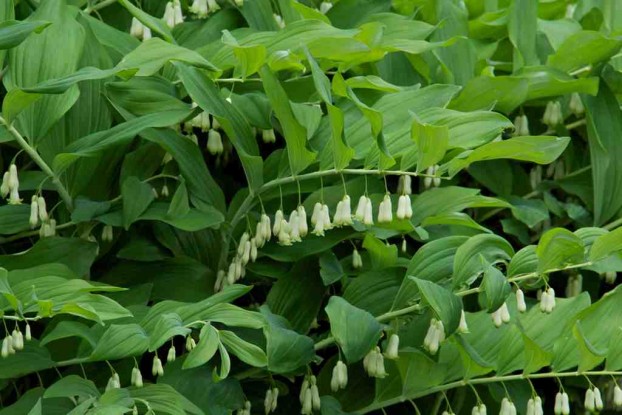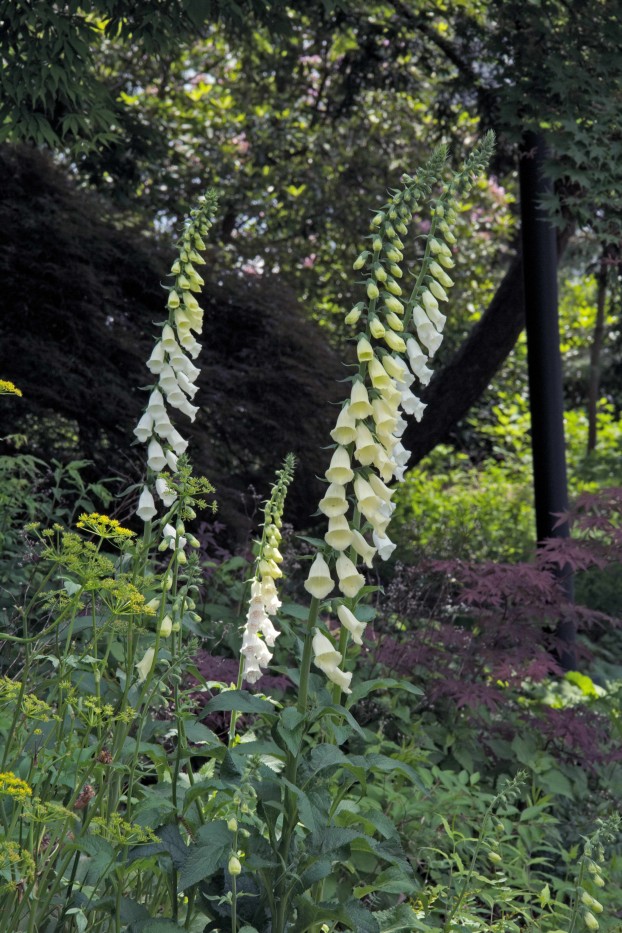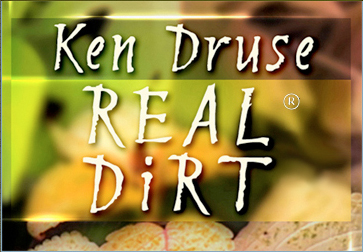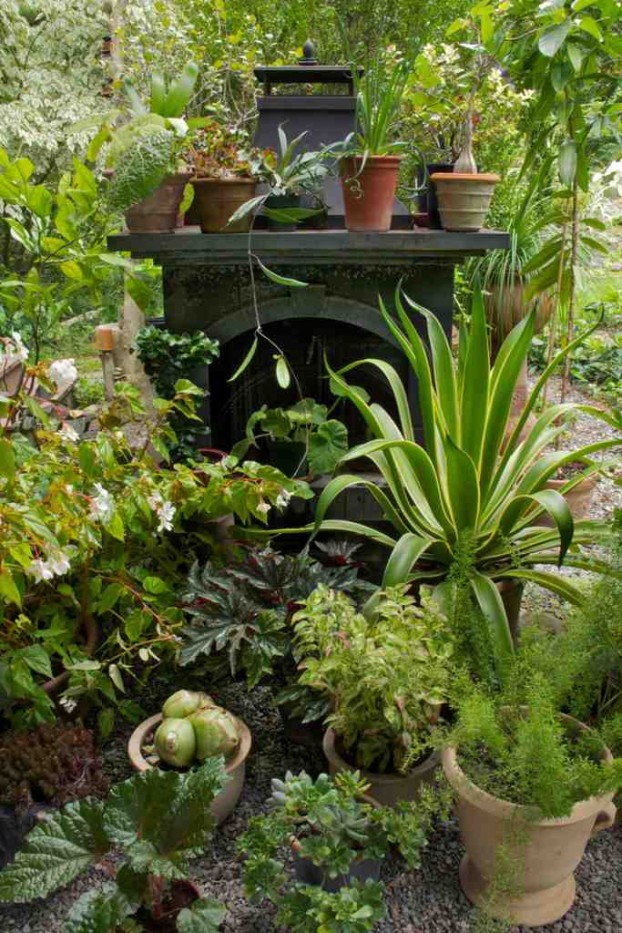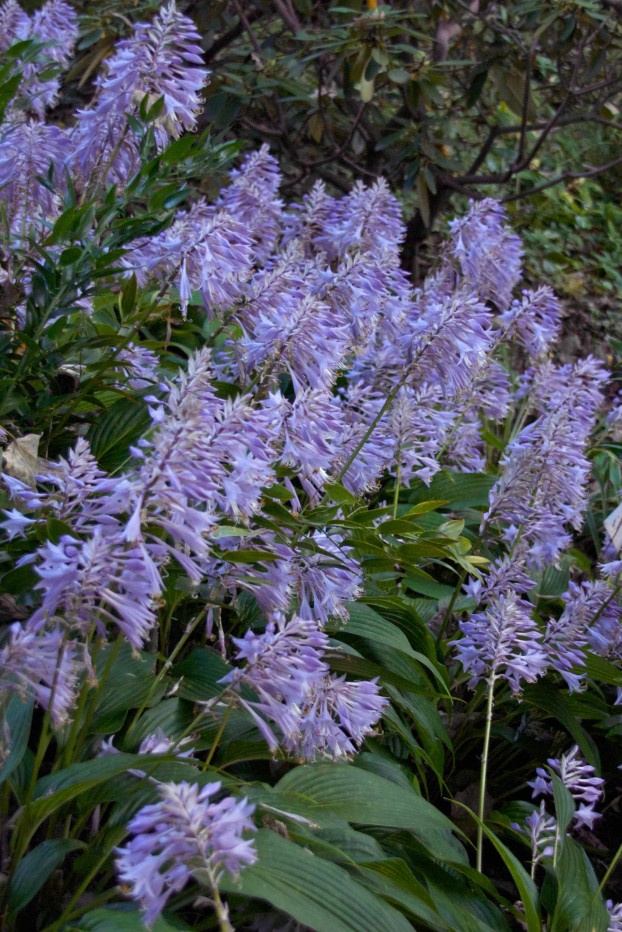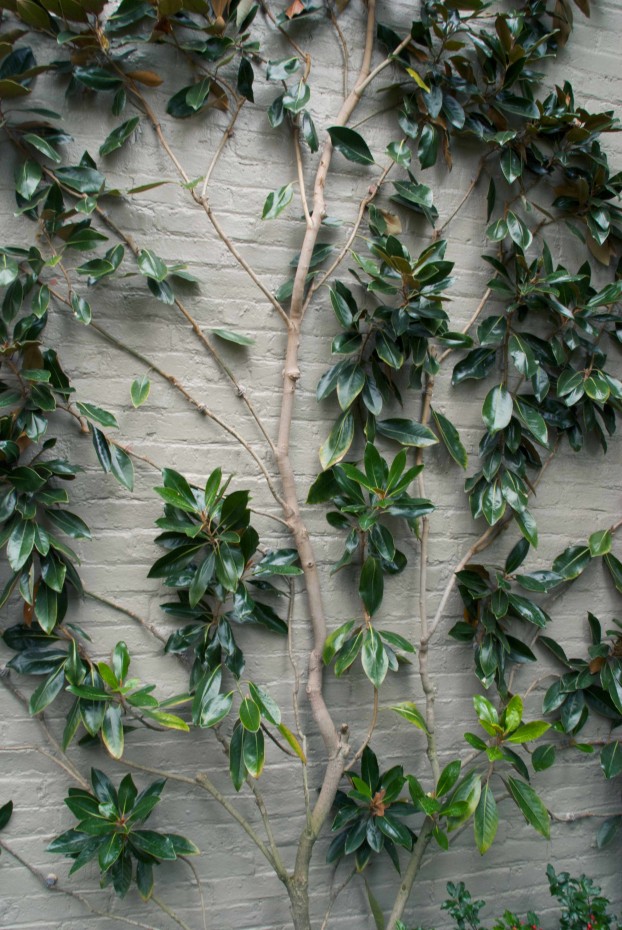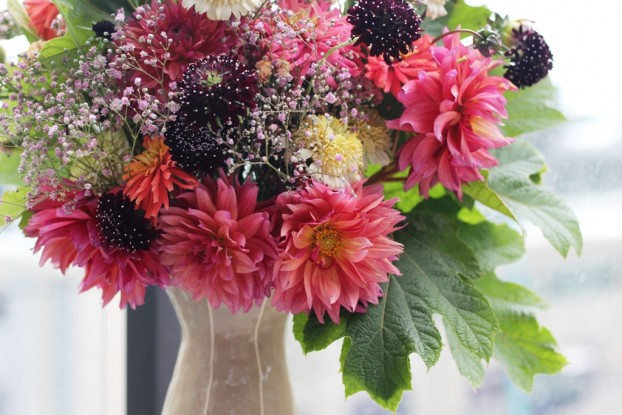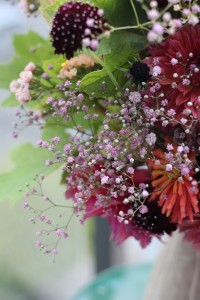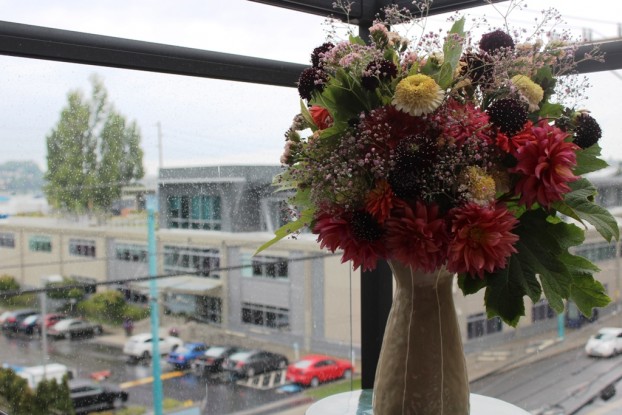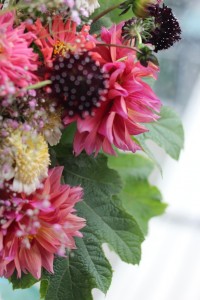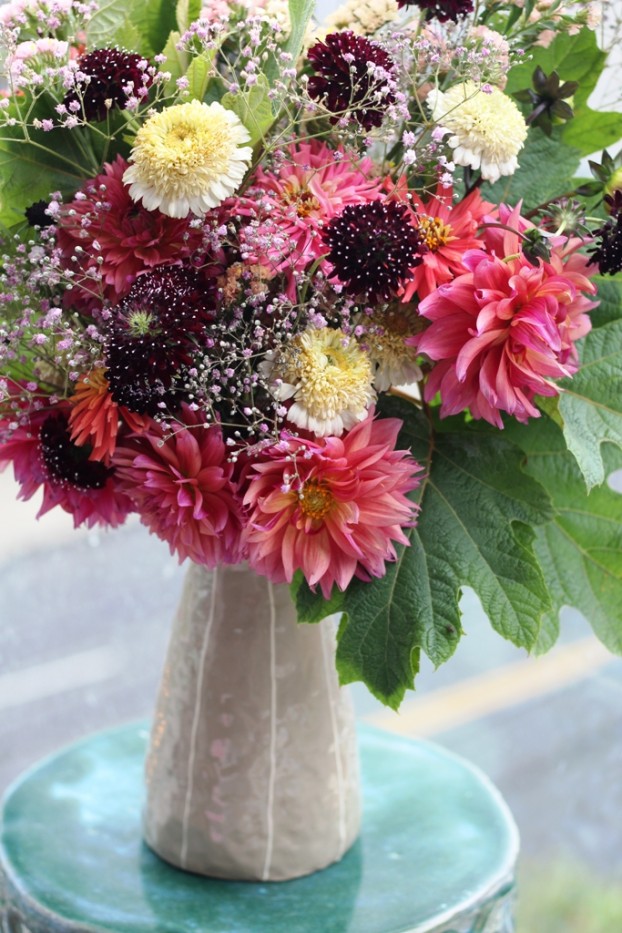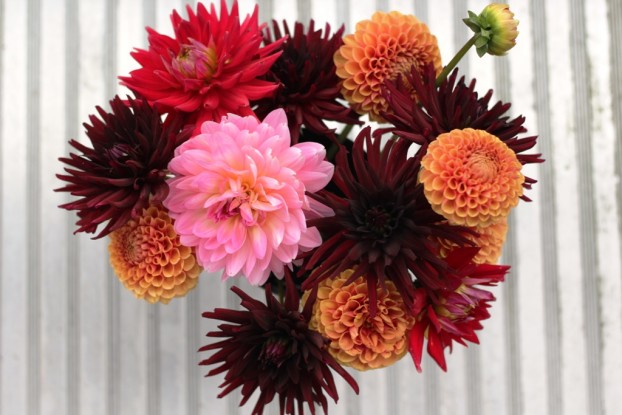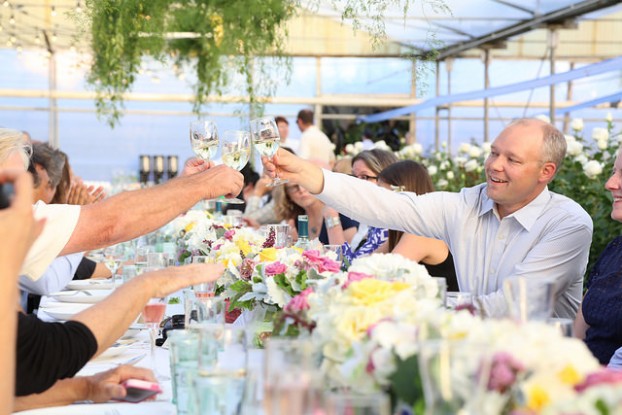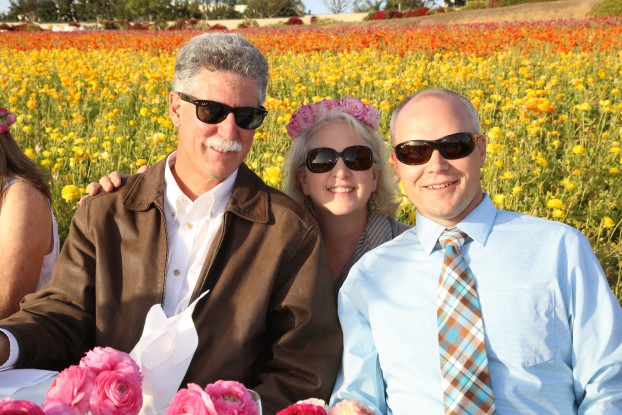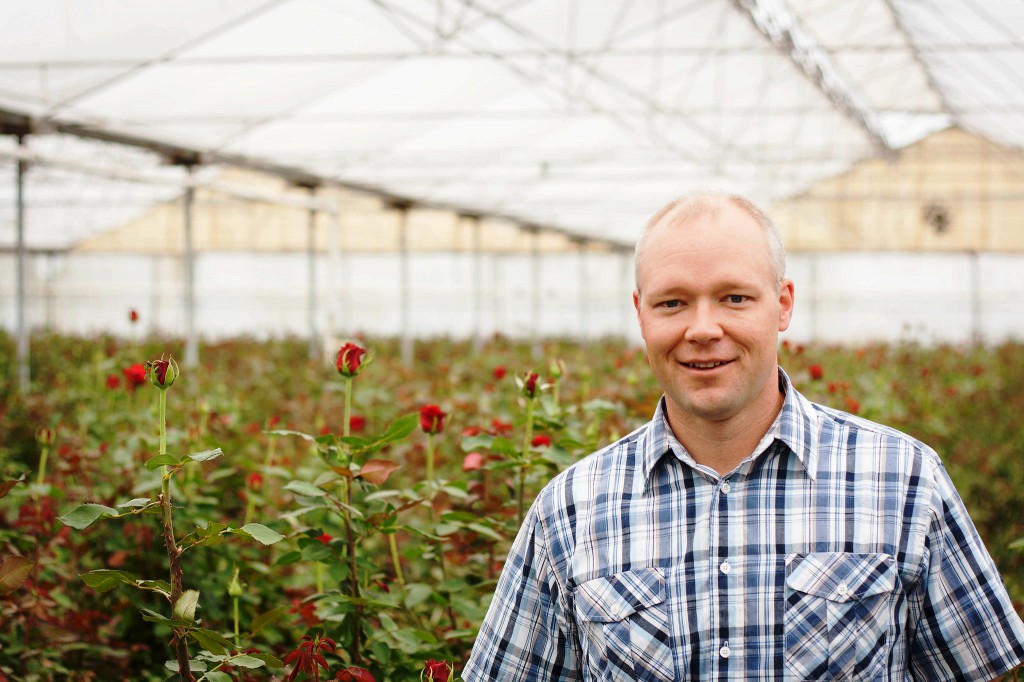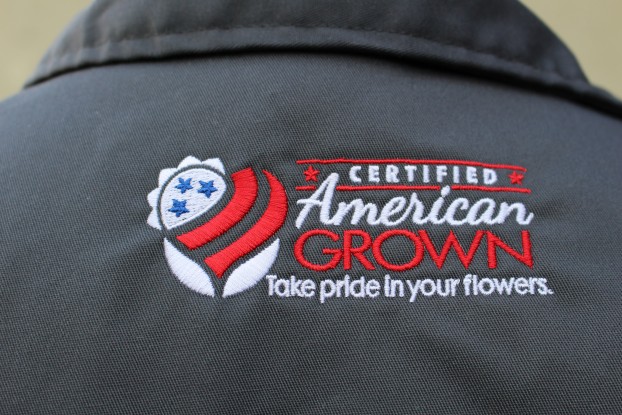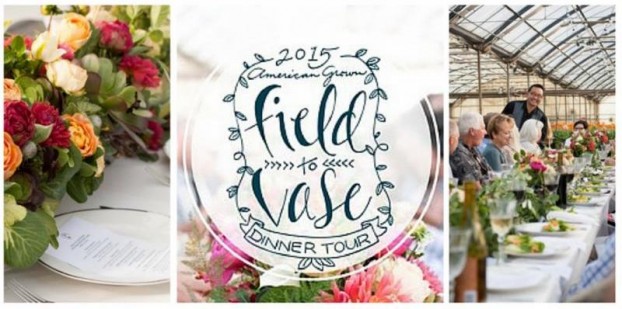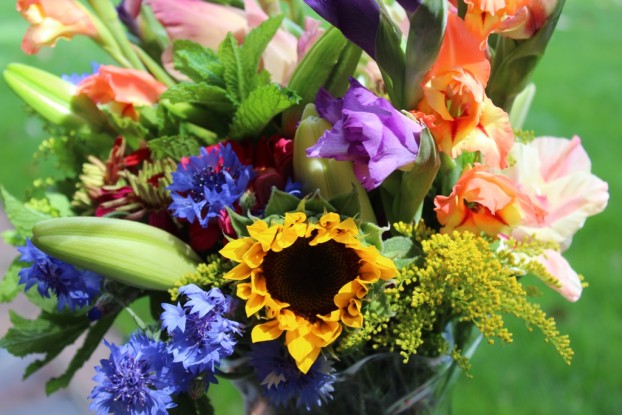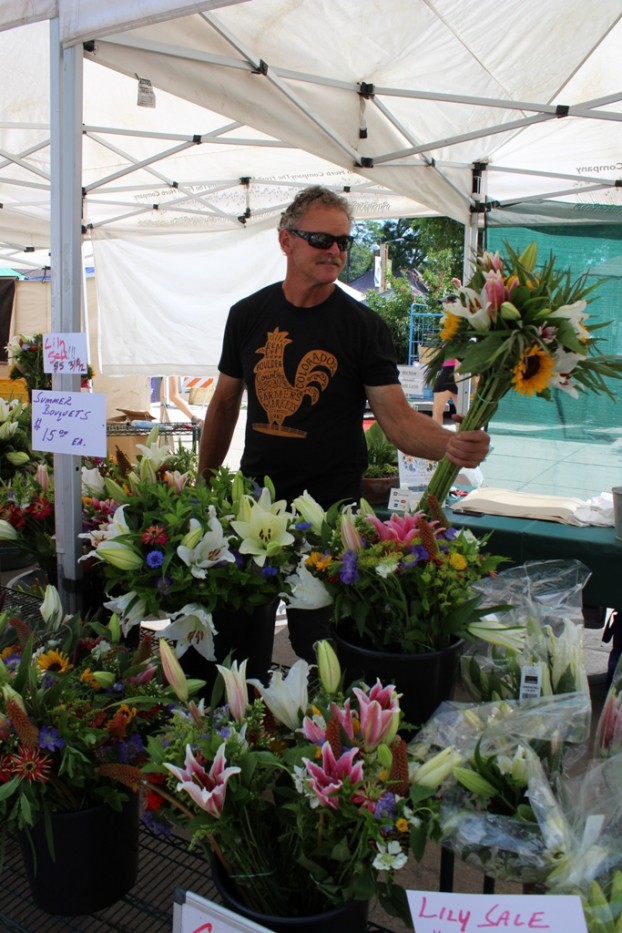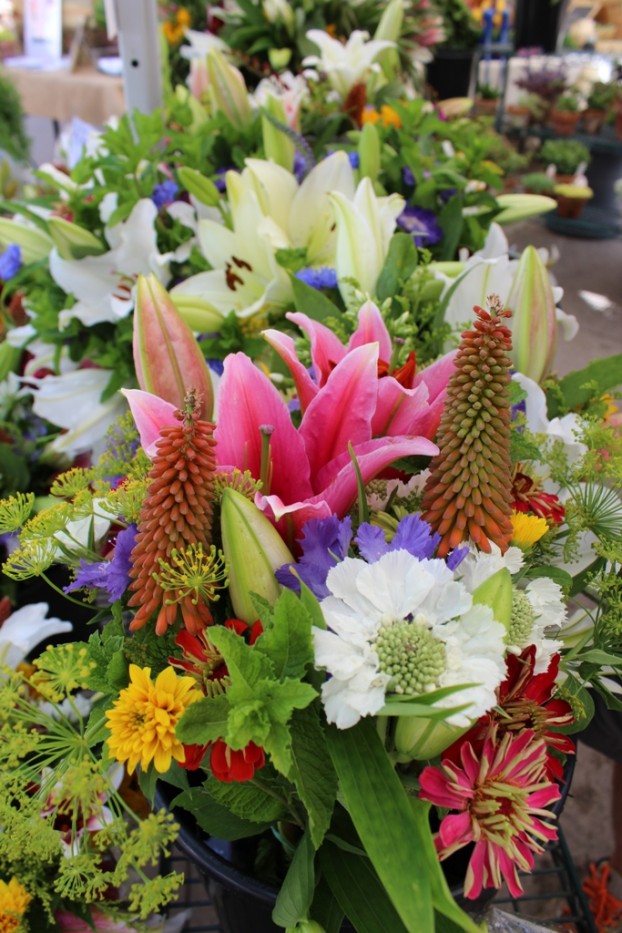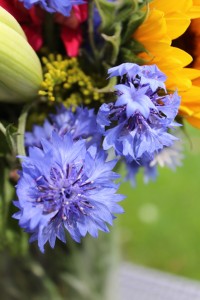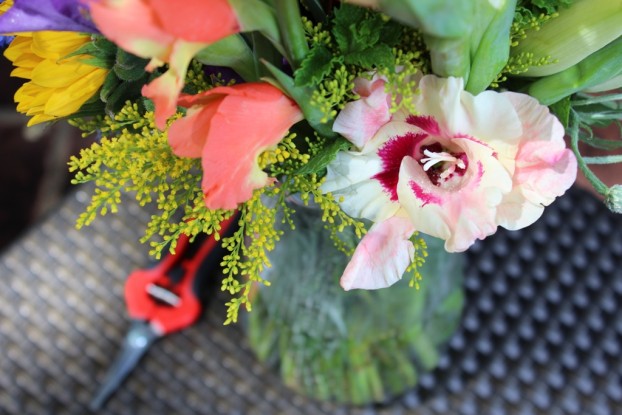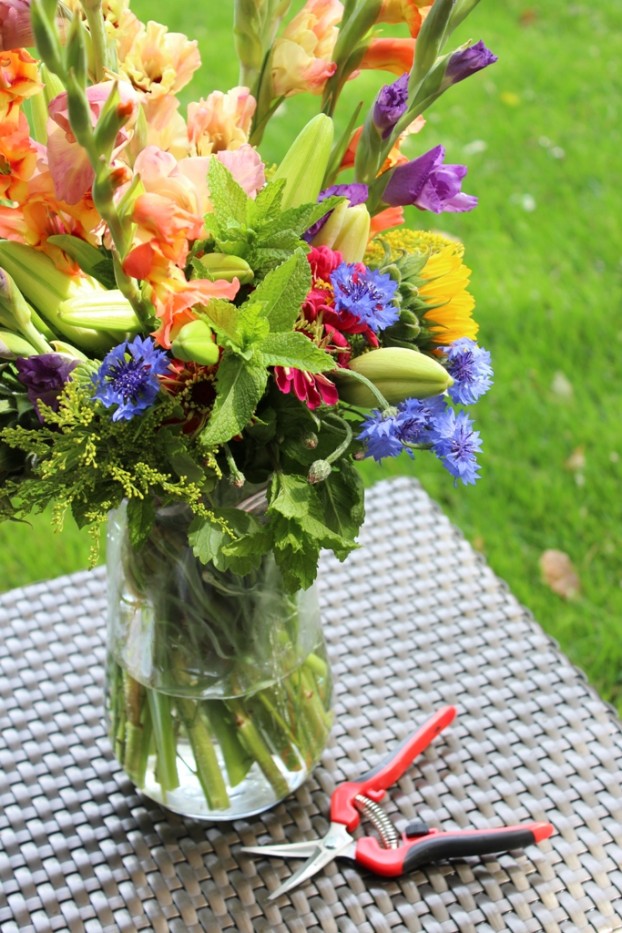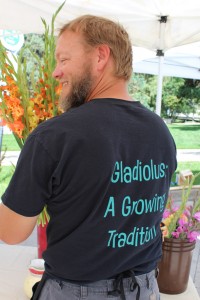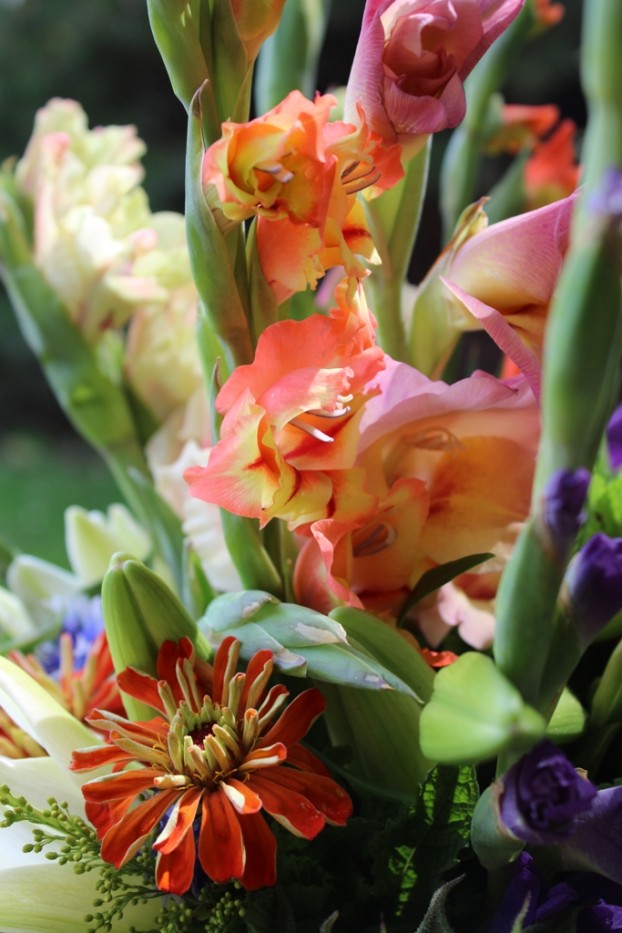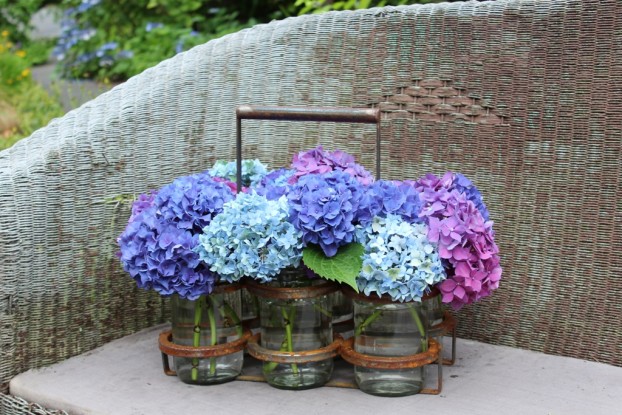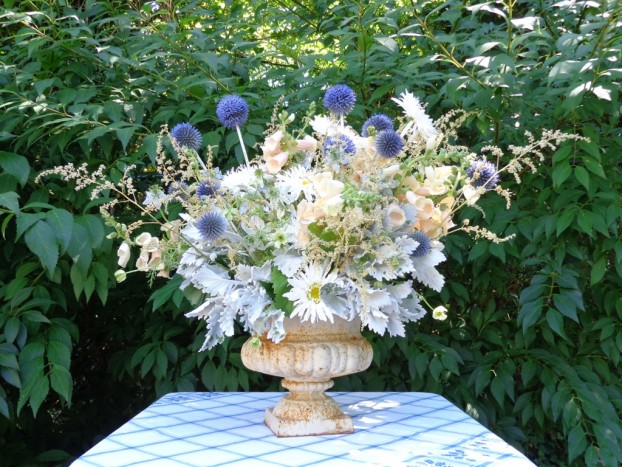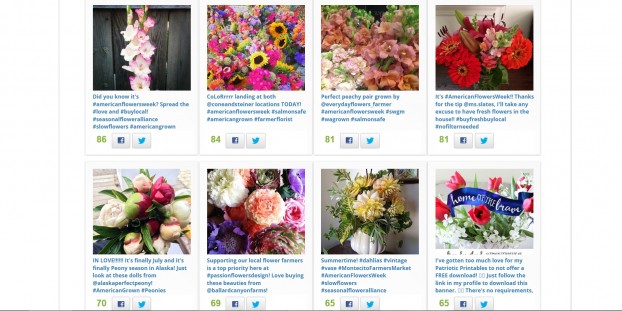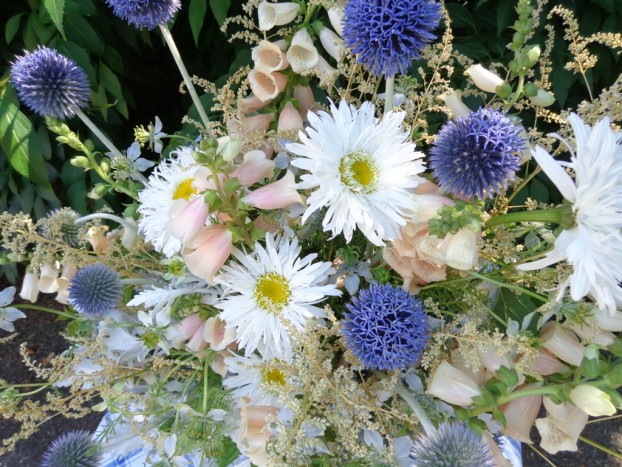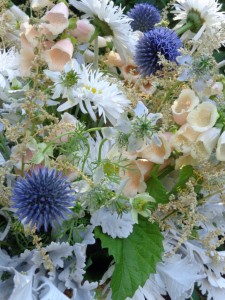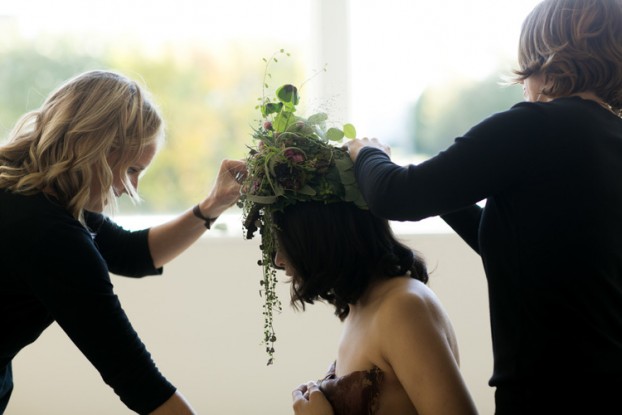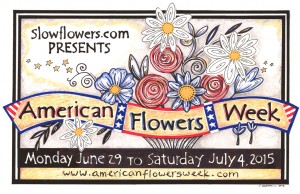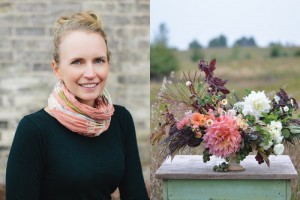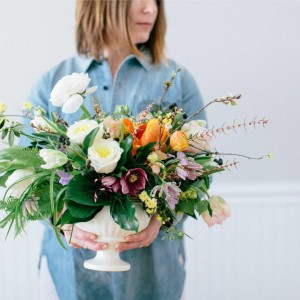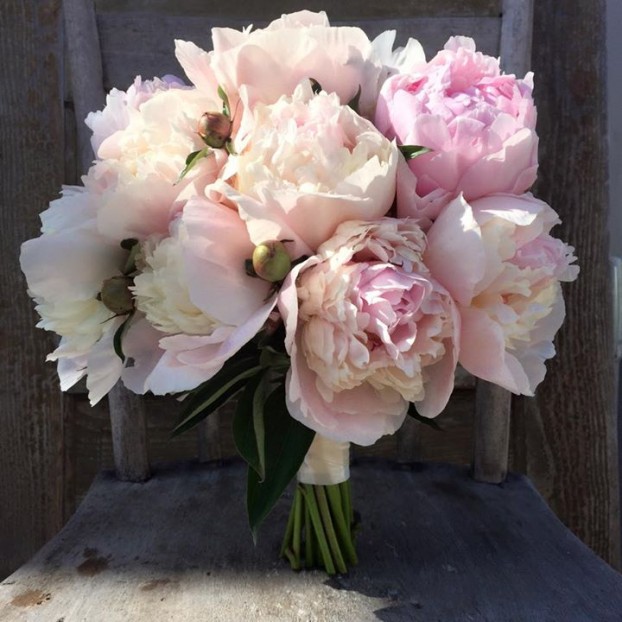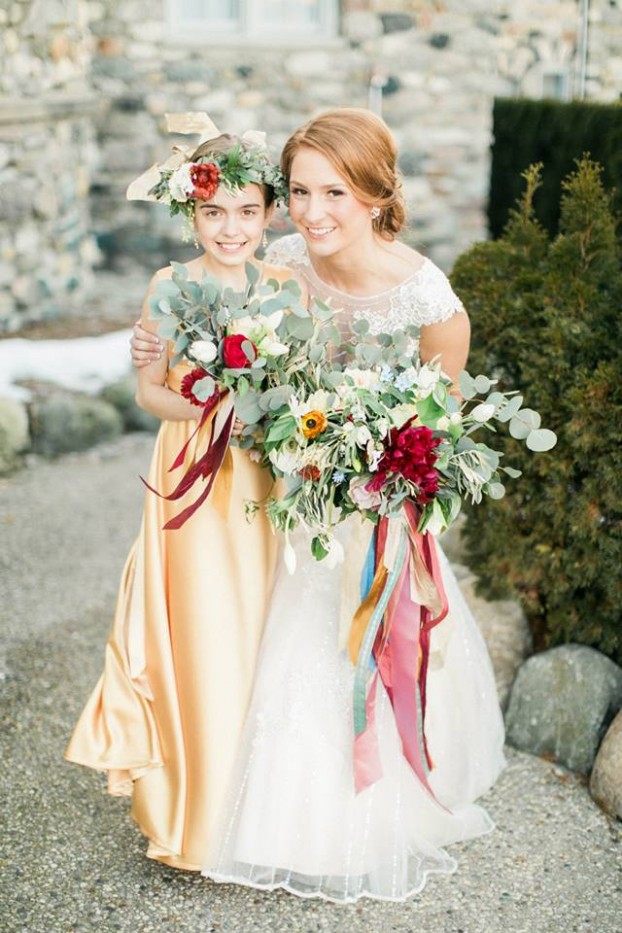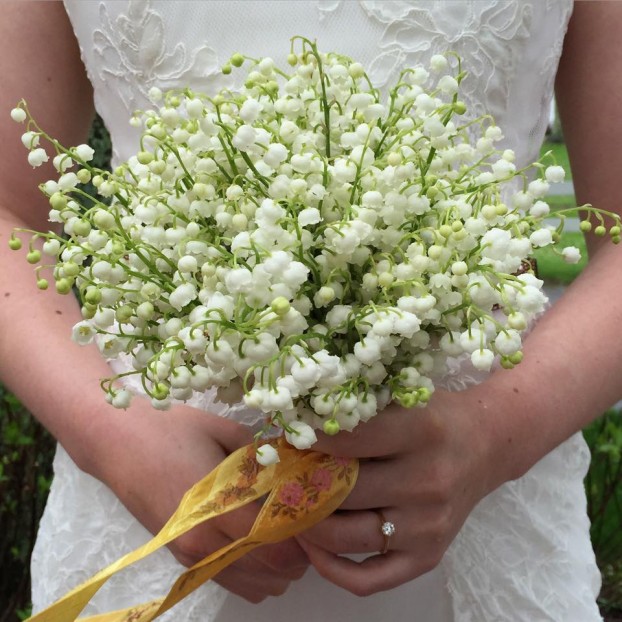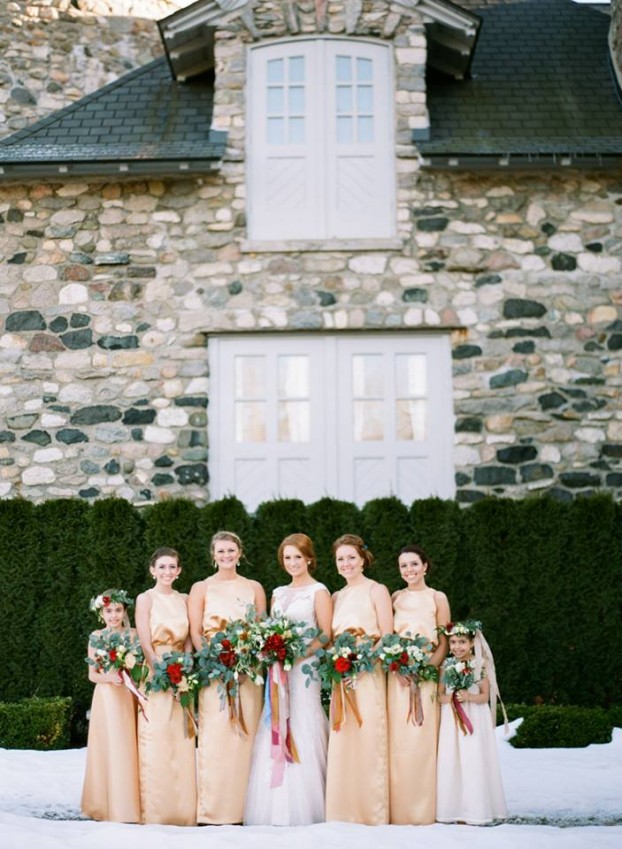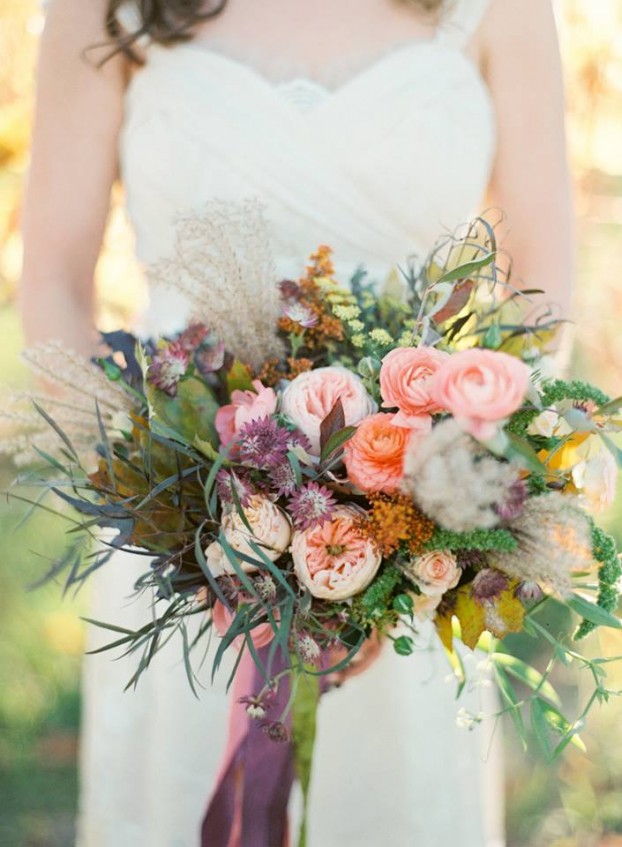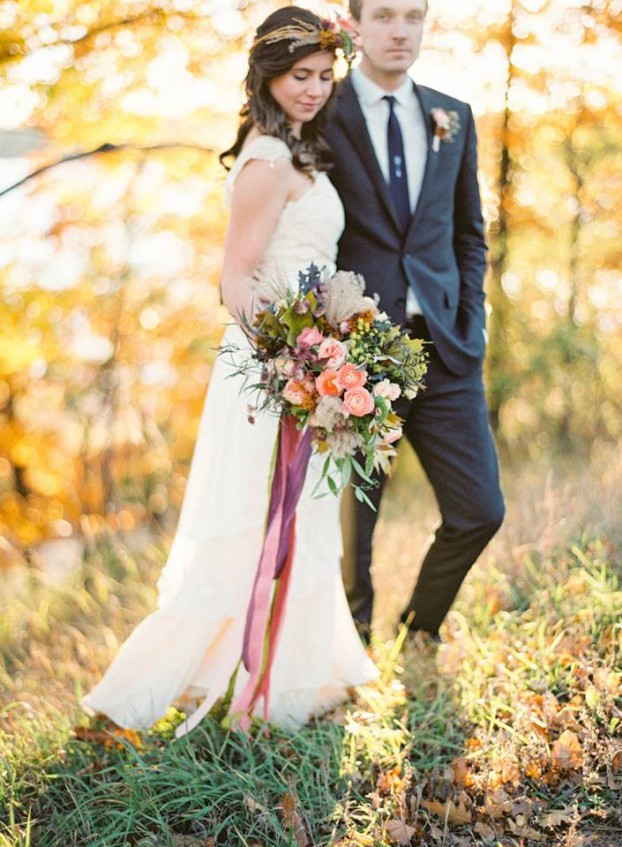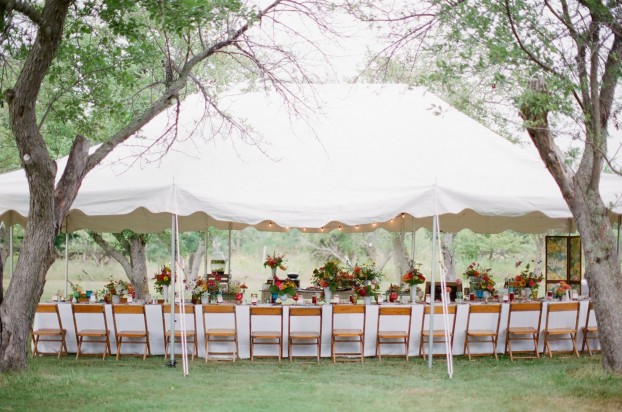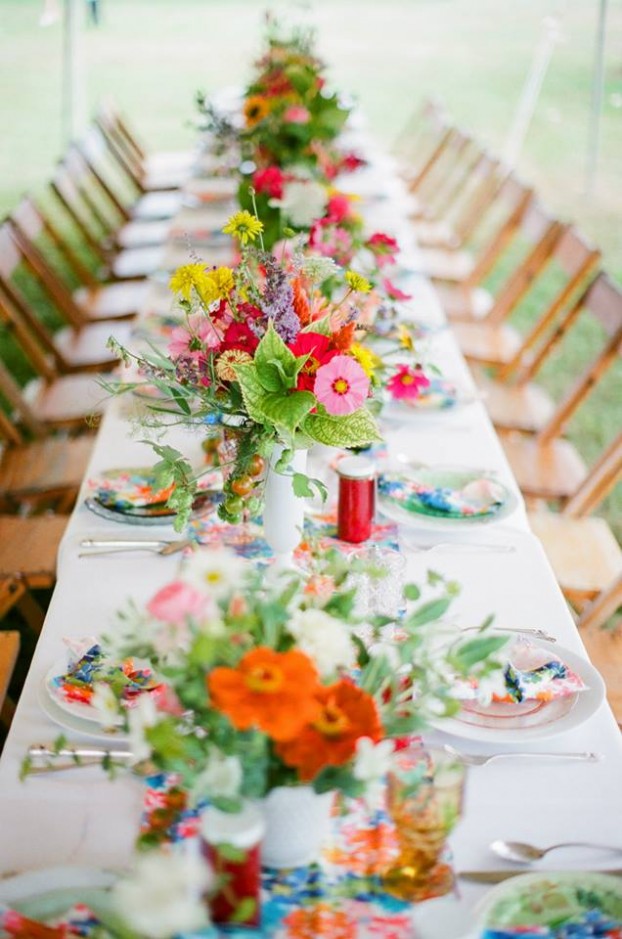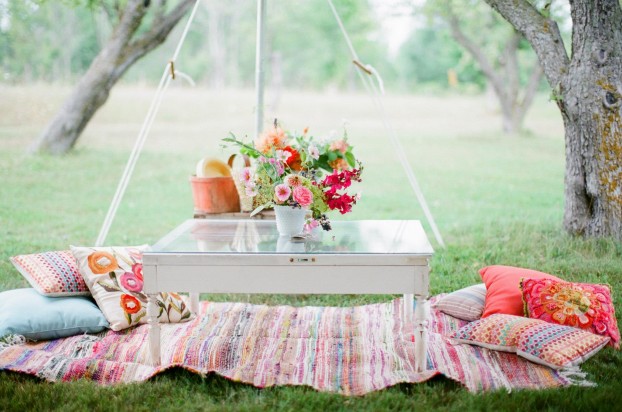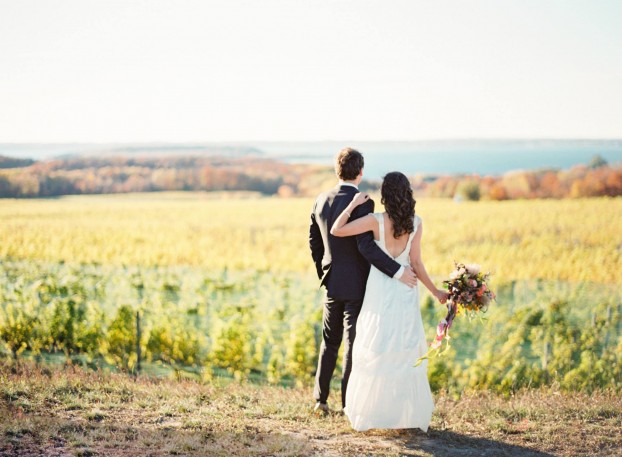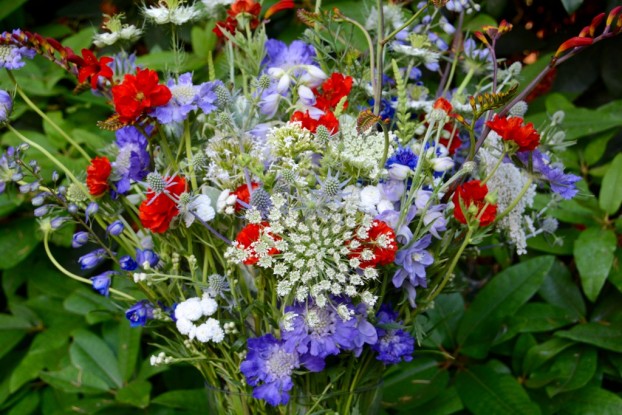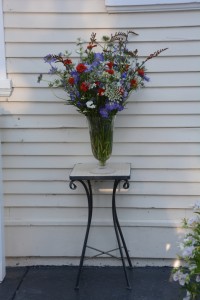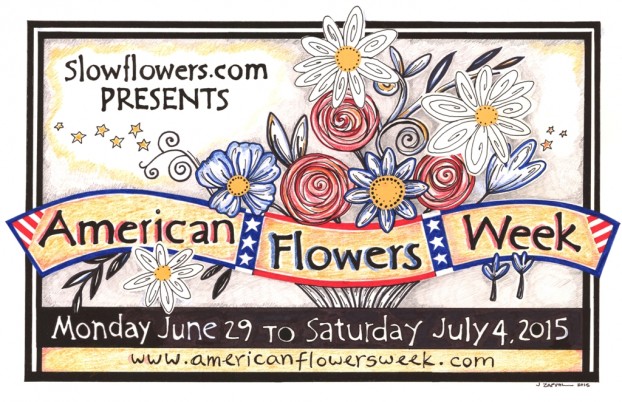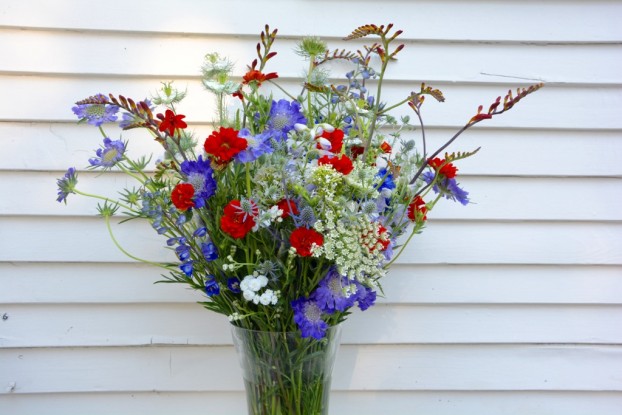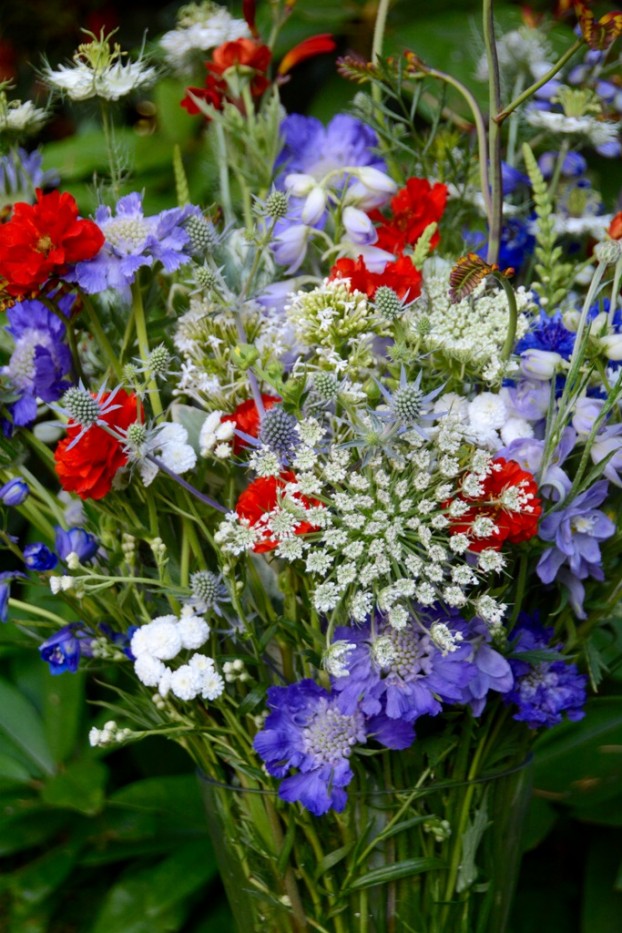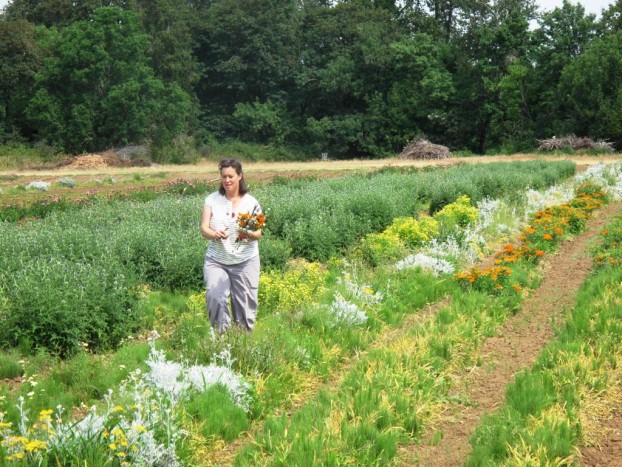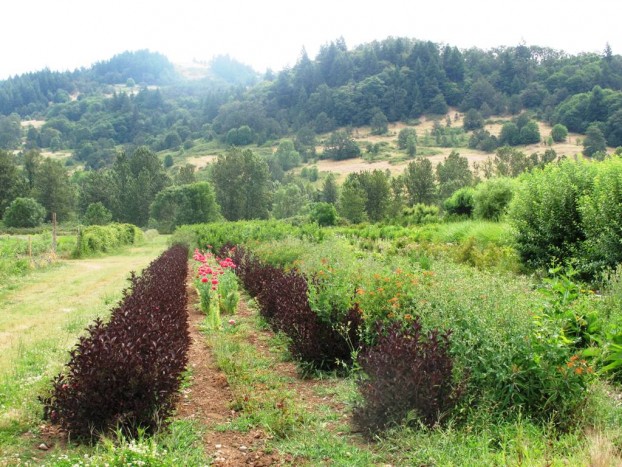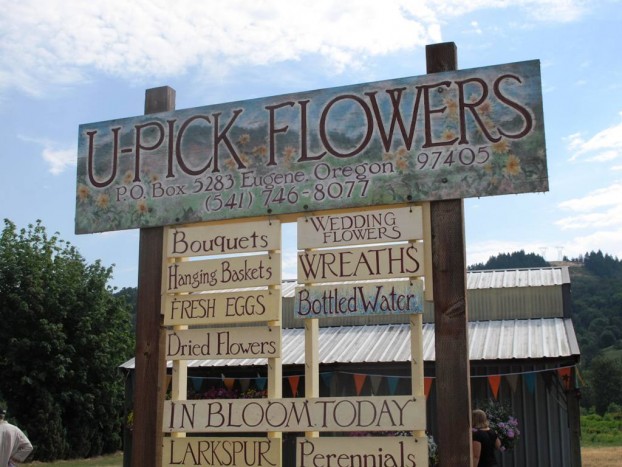Podcast: Play in new window | Download
Subscribe: Apple Podcasts | Podcast Index | | More
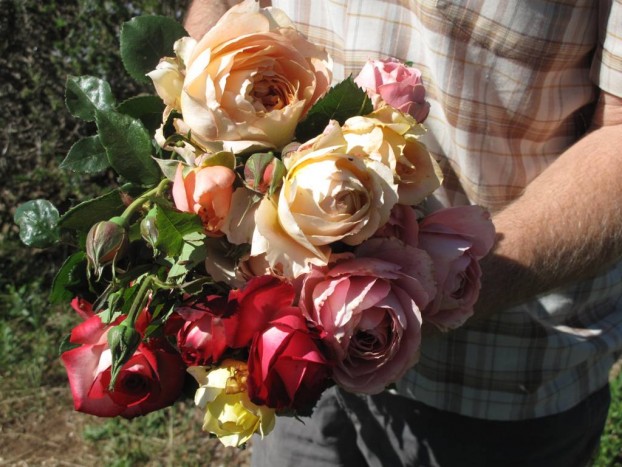
Christof Berneau holds in his hands, a bunch of beautiful, organic, just-picked roses from UCSC’s flower fields.
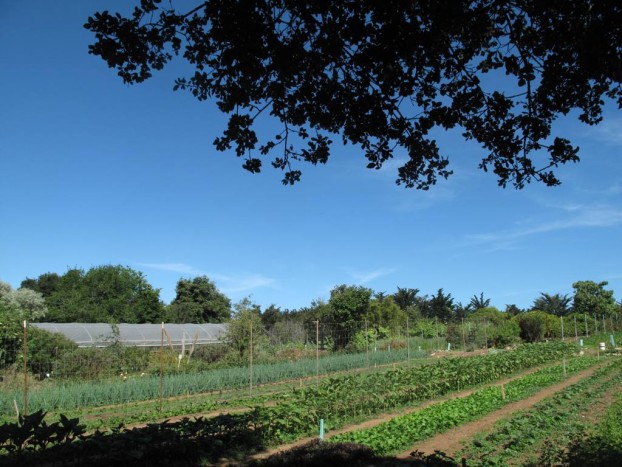
“The Farm” at University of California/Santa Cruz’s 33-acre compound.
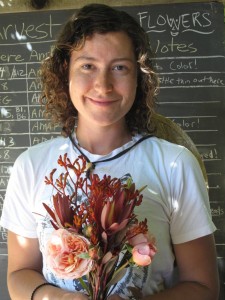
A 2015 Apprentice poses with her just-harvested, just-designed bouquet.
Last month, my travels returned me to one of the most prolific flower growing regions in the U.S. – Monterey Bay, California.
I was there to co-host the Field to Vase Dinner Tour at Pajarosa Roses, a fantastic American flower farm known for luxury roses grown with sustainable practices. I was also able to connect with some other influential people in the cut flower industry in order to record interviews for the Slow Flowers Podcast.
You’ll hear today from one of those voices. Please meet Christof Bernau, the farm garden manager of the UC Santa Cruz’s Center for Agroecology and Sustainable Food Systems.
A veteran of the UC Santa Cruz program, Christof is a totally hands-on farmer-educator, working closely with the graduate apprentices, undergraduates and members of the public interested in land stewardship through farming.
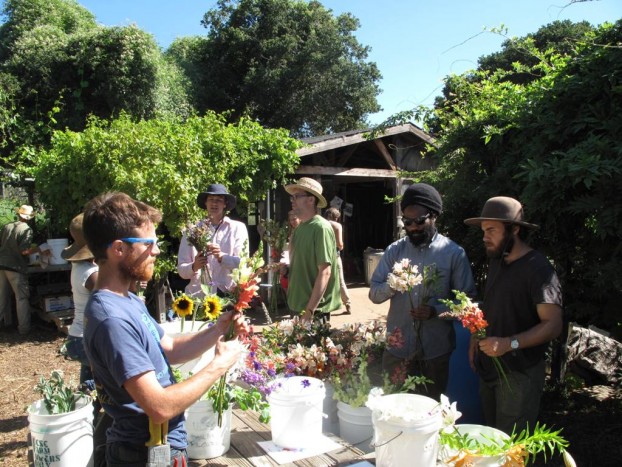
2015 UCSC Apprentices gather to make beautiful summertime bouquets from flowers picked only moments earlier.
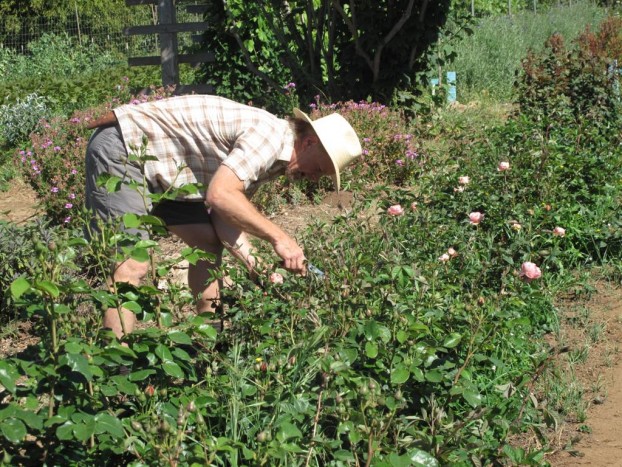
Christof, clipping a few UCSC-grown Kordes roses for a custom order.
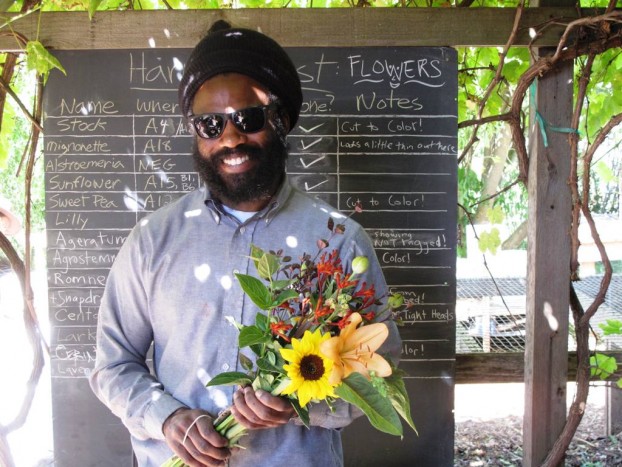
Look how much happiness these American grown flowers spread!
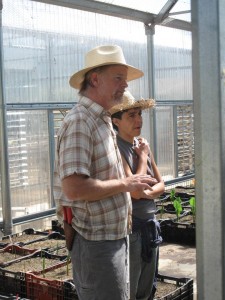
Today’s guest, Christof Berneau, is the hands-on educator-farmer at USCS’s Center for Agroecology and Sustainable Food Systems.
Here’s more about Christof:
Christof has been part of the CASFS since coming to the Santa Cruz area as an Apprentice in 1994. He has been an Apprenticeship instructor since 1999.
Christof has extensive experience in nursery management, propagation, vegetable, and specialty cut flower production.
He is especially interested in floral design with specialty crops, high nutrition crops, small-scale grain production, the cultivation of a wide range of fruit crops, and creating a learning environment where everyone can thrive.
He holds a BA in Asian History from Reed College and an MA in Equity and Social Justice in Adult Education from San Francisco State University.
When not immersed in the farm, Christof cherishes his time with his wife Jennifer and their daughter Eleanor Wren, spending time in the mountains, pursuing wildflowers, studying natural history, water cycles, and local ecology.
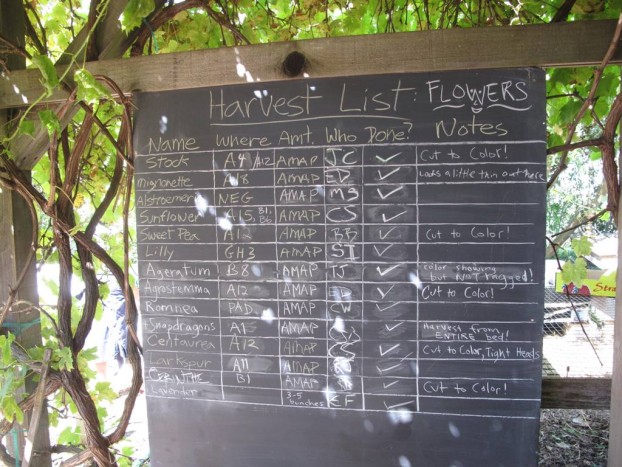
Harvest Schedule- Love this!
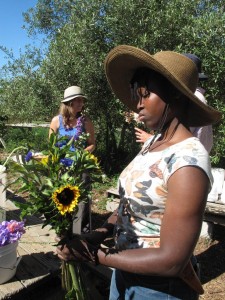
Summer bouquet-making with the 2015 apprentices yields some gorgeous and hyper-local arrangements.
And more about the Center:
It is a research, education, and public service program dedicated to increasing ecological sustainability and social justice in the food and agriculture system. And yes, thankfully, flowers are a part of that equation!
The Center operates the 3-acre Alan Chadwick Garden and the 33-acre UCSC Farm, which serve as research, teaching, and training facilities. Proceeds from produce, flower and plant sales support the UCSC Farm & Garden facilities, and the Center’s Apprenticeship training course in organic farming and gardening.
“The Farm,” as it is called, is the hub of activity for the Apprenticeship in Ecological Horticulture, which teaches the concepts and practices of organic gardening and small-scale farming.
This full-time, six-month program includes approximately 300 hours of classroom instruction and 700 hours of in-field training and hands-on experience in the greenhouses, gardens, orchards, and fields.
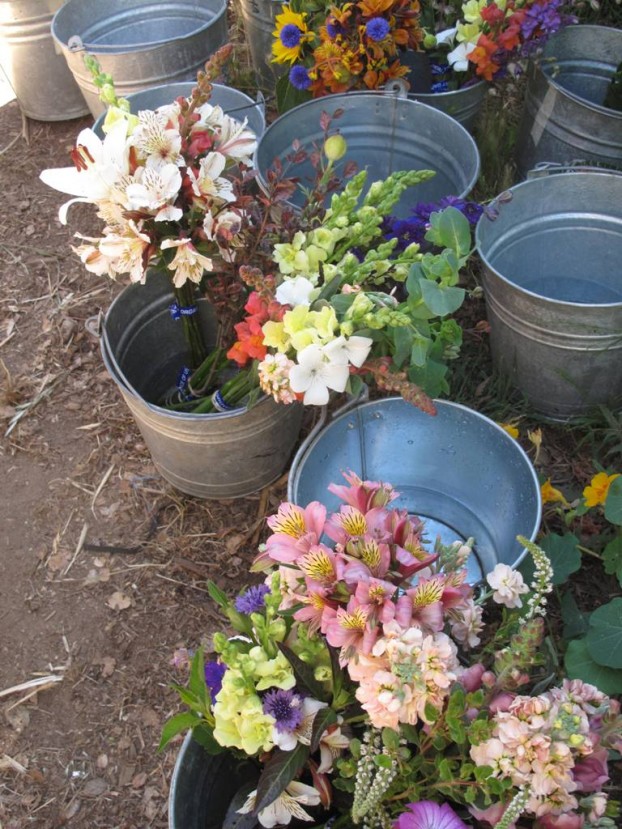
Buckets of Santa Cruz flowers, ready for designing.
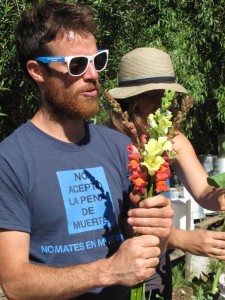
Another creative Apprentice with his custom arrangement.
Since its founding in 1967, the Apprenticeship has developed into an internationally recognized program that blends the virtues of experiential learning with traditional classroom studies.
Topics covered during the six-month course include instruction and daily work experience in organic gardening and farming, focusing on ecological interactions amongst plants, soils, climate, insects, and pathogens.
In a hands-on education approach, apprentices work alongside staff in the greenhouse, gardens, fields, and orchards, as well as attend lectures, demonstrations, and field trips.
Apprentices are exposed to the different aspects of growing plants organically on both a hand-dug garden scale and a tractor-cultivated field scale. The Apprentices selected to attend the course each year are interested in practical training that will prepare them to teach others and/or to run their own operations.
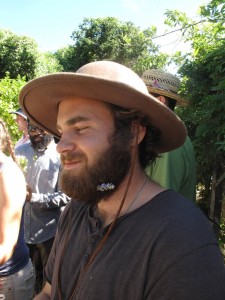
Another fun Apprentice shot – note the lavender sprig in his beard.
The goal of the Apprenticeship is to increase the number and diversity of individuals who have a command of the fundamental skills and concepts associated with organic horticulture and agriculture, such that they will be prepared to actively participate in commercial or social service projects that aim to improve human health and environmental quality through organic practices.
If you find yourself traveling to Northern California, the SF Bay Area or Santa Cruz, check out the ways you can connect with the Center for Agroecology and Sustainable Food Systems.
For flower farmers and floral designers, something really exciting is coming up at The Farm on Saturday, July 25th: Growing and Designing Special Event Flowers.
Join professional flower grower Zoe Hitchner of Front Porch Farm in Healdsburg, and Sky DeMuro of UCSC’s Alan Chadwick Garden for a day-long workshop on special event flowers. If you are a bride, groom, farmer-florist, or simply love playing with flowers, this workshop will delight and educate.
Zoe and Sky will lead participants in demonstrations and hands-on activities as we make unique, seasonal arrangements that are farm-fresh and elegant. In addition to basic floral design techniques including hand-tied bouquets, centerpieces, corsages, and boutonniers, this workshop will also cover organic growing and selection tips for those who want to grow their own bouquets.
The cost of the all-day workshop is $125 (or $95 for members of the Friends of the UCSC Farm & Garden. Discounts available for beginning farmers (see contact information, below, to inquire about discounts). Space is limited to 20 participants and you’ll take home your arrangements. Pre-registration required. Click here to read a lovely profile about Zoe and Front Porch Farm that was featured on the Field to Vase blog.
Check out these Social sites where you can follow year-round activity of The Farm:
The Farm on Instagram
The Farm on Facebook
Application details about the 2016 Apprenticeship program.
You never know, this may be your introduction to a whole new world of sustainable flower and food farming!
Listeners like you have downloaded this podcast nearly 56,000 times. THANK YOU to each and every one of you for downloading, listening, commenting and sharing. It means so much.
Until next week, you’re invited to join me in putting more American grown flowers on the table, one vase at a time. And If you like what you hear, please consider logging onto Itunes and posting a listener review.
The content and opinions expressed here are either mine alone or those of my guests alone, independent of any podcast sponsor or other person, company or organization.
The Slow Flowers Podcast is engineered and edited by Andrew Wheatley and Hannah Holtgeerts. Learn more about their work at shellandtree.com.
